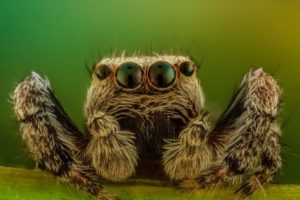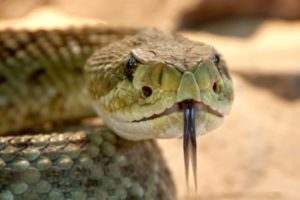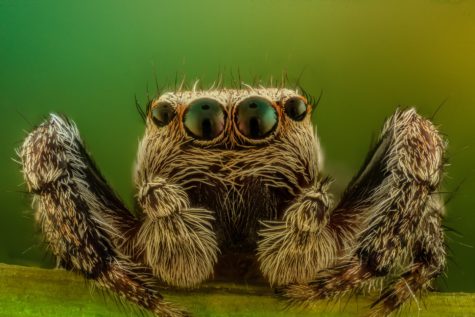LEIPZIG, Germany — The infant’s eyes grow wide at the sight of the eight-legged creature. She’s never been exposed to spiders before, but something inside her signals to pay attention.
Demonstrating this instinctual reaction, a new study out of the Max Planck Institute for Human Cognitive and Brain Sciences and Uppsala University shows that even six-month-old babies’ pupils dilate when seeing snakes or spiders. This response, researchers say, adds to the argument that fear of such creatures is facilitated by instinct, rather than just learned.

“When we showed pictures of a snake or a spider to the babies instead of a flower or a fish of the same size and colour, they reacted with significantly bigger pupils,” says lead investigator and neuroscientist Stefanie Hoehl in a press release. “In constant light conditions this change in size of the pupils is an important signal for the activation of the noradrenergic system in the brain, which is responsible for stress reactions. Accordingly, even the youngest babies seem to be stressed by these groups of animals.”
While this increased attention to the animals means that babies quickly learn to fear them, other studies suggest it is not the fear that is innate, rather it’s the increased arousal and attention to them that is instinctual. Indeed, some of the previous research the authors cite shows that younger babies’ pupils actually dilate more in response to happy faces than fearful ones.
In such instances, the authors refer to such dilation as an “arousal” rather than a “stress” response.
Other experiments have likewise found that infants are faster at detecting snakes, but not necessarily inherently afraid of them. In an earlier experiment, researcher Vanessa LoBue of Rutgers University helped show that while babies paid more attention to snakes, they weren’t startled more easily when looking at them.
“While we find differential responses to snakes early on, meaning they are special, it doesn’t seem to be related to fear early in development,” says LoBue in a BBC article on that experiment. “It’s possible that paying more attention to something might make fear learning easier later on. It facilitates fear learning.
As the babies in Hoehl ‘s more recent study were only six months old, and are from a part of the world where there are few poisonous snakes or spiders, the study authors say the reactions –whether they represent stress or just increased interest — must be an ancestral instinct.

“We conclude that fear of snakes and spiders is of evolutionary origin. Similar to primates, mechanisms in our brains enable us to identify objects as ‘spider’ or ‘snake’ and to react to them very fast. This obviously inherited stress reaction in turn predisposes us to learn these animals as dangerous or disgusting. When this accompanies further factors it can develop into a real fear or even phobia,” Hoehl says. “A strong panicky aversion exhibited by the parents or a genetic predisposition for a hyperactive amygdala, which is important for estimating hazards, can mean that increased attention towards these creatures becomes an anxiety disorder.”
The scientists say that it’s the length of time our ancestors spent around spiders and snakes that makes them scarier to us than other potentially dangerous animals.
“We assume that the reason for this particular reaction upon seeing spiders and snakes is due to the coexistence of these potentially dangerous animals with humans and their ancestors for more than 40 to 60 million years—and therefore much longer than with today’s dangerous mammals,” says Hoehl. “The reaction which is induced by animal groups feared from birth could have been embedded in the brain for an evolutionarily long time.”
The results of Hoehl and her colleagues study were published recently in a paper in the journal Frontiers In Psychology.

Makes sense.